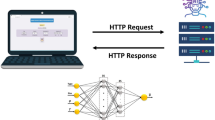Abstract
Purpose
The aim of this study was to identify the dominant factors affecting the stability of nanoemulsions, using artificial neural networks (ANNs).
Methods
A nanoemulsion preparation of budesonide containing polysorbate 80, ethanol, medium chain triglycerides and saline solution was designed, and the particle size of samples with various compositions, prepared using different rates and amounts of applied ultrasonic energy, was measured 30 min and 30 days after preparation. Using ANNs, data were modelled and assessed. The derived predictive model was validated statistically and then used to determine the effect of different formulation and processing input variables on particle size growth of the nanoemulsion preparation as an indicator of the preparation stability.
Results
The results indicated that the data can be satisfactorily modelled using ANNs, while showing a high degree of complexity between the dominant factors affecting the stability of the preparation.
Conclusion
The total amount of applied energy and concentration of ethanol were found to be the dominant factors controlling the particle size growth.




Similar content being viewed by others
References
Tenjarla S. Microemulsions: an overview and pharmaceutical applications. Crit Rev Ther Drug Carrier Syst. 1999;16:461–521.
Ghosh PK, Murthy RS. Microemulsions: a potential drug delivery system. Curr Drug Deliv. 2006;3:167–80.
Sarker DK. Engineering of nanoemulsions for drug delivery. Curr Drug Deliv. 2005;2:297–310.
Ruckenstein E, Chi JC. Stability of microemulsions. J Chem Soc Faraday Transactions. 1975;2(71):1690–707.
Debuigne F, Cuisenaire J, Jeunieau L, Masereel B, Nagy JB. Synthesis of nimesulide nanoparticles in the microemulsion epikuron/isopropyl myristate/water/n-butanol (or isopropanol). J Colloid Interface Sci. 2001;243:90–101.
Karasulu HY. Microemulsions as novel drug carriers: the formation, stability, applications and toxicity. Expert Opin Drug Deliv. 2008;5:119–35.
Paul BK, Moulik SP. Uses and applications of microemulsions. Curr Sci. 2001;80:990–1001.
Müller RH, Heinemann S. Fat emulsions for parenteral nutrition. I: Evaluation of microscopic and laser light scattering methods for the determination of the physical stability. Clin Nutr. 1992;11:223–36.
von Rybinski W, Guckenbiehl B, Tesmann H. Influence of co-surfactants on microemulsions with alkyl polyglycosides. Colloids Surf A Physicochem Eng Asp. 1998;142:333–42.
Wang HJ, Zhichao D. Study on formation of microemulsions with systems containing water, aerosol-AOT and ethyl linoleate. Zhongguo Yaoxue Zazhi. 1998;33:540–3.
Eastoe JR, Steytler DC. A study of microemulsion stability. NATO ASI Series, Series C: Mathematical and Physical Sciences. 1990;324:295–301.
Bourquin J, Schmidli H, van Hoogevest P, Leuenberger H. Comparison of artificial neural networks (ANN) with classical modelling techniques using different experimental designs and data from a galenical study on a solid dosage form. Eur J Pharm Sci. 1998;6:287–300.
Sathe PM, Venitz J. Comparison of neural network and multiple linear regression as dissolution predictors. Drug Dev Ind Pharm. 2003;29:349–55.
Rowe RC, Roberts RJ. Intelligent software for product formulation. London: Taylor & Francis; 1998.
Amani A, York P, Chrystyn H, Clark BJ, Do DQ. Determination of factors controlling the particle size in nanoemulsions using artificial neural networks. Eur J Pharm Sci. 2008;35:42–51.
Intelligensys. Inform manual. Intelligent formulation (2004).
Shao Q, Rowe RC, York P. Comparison of neurofuzzy logic and neural networks in modelling experimental data of an immediate release tablet formulation. Eur J Pharm Sci. 2006;28:394–404.
Ali HSM, Blagden N, York P, Amani A, Brook T. Artificial neural networks modeling the prednisolone nanoprecipitation in microfluidic reactors. Eur J Pharm Sci. 2009;37:514–22.
Author information
Authors and Affiliations
Corresponding author
Rights and permissions
About this article
Cite this article
Amani, A., York, P., Chrystyn, H. et al. Factors Affecting the Stability of Nanoemulsions—Use of Artificial Neural Networks. Pharm Res 27, 37–45 (2010). https://doi.org/10.1007/s11095-009-0004-2
Received:
Accepted:
Published:
Issue Date:
DOI: https://doi.org/10.1007/s11095-009-0004-2




